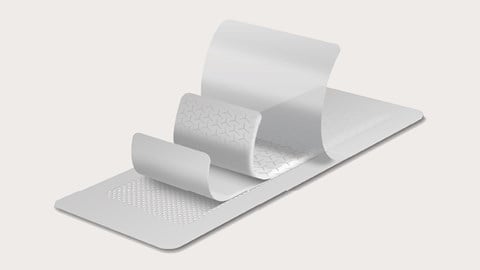What are the demands on a surgical dressing?
A surgical dressing should help to:
- Reduce the risk of SSIs
- Support early patient mobilisation
- Not cause post-operative blistering
- Manage bleeding or exudate
In addition, it should be supported by a high standard of clinical evidence and be cost-effective

Mepilex Surgical offers optimal post-surgical fluid handling with a unique five-layer design that effectively absorbs, distributes and retains exudate or blood.
-
Supports early patient mobilisation
Unique flex-cut pad stretches in all directions, conforming to the body even as it moves
-
Clinically shown to minimize dressing-related skin damage and pain
Safetac interface adheres gently, maintaining skin integrity
-
Supports longer wear times and low frequency of dressing changes
Shower-proof seal and bacteria barrier (microbes larger than 25 nm)
Ultra-absorbent material absorbs more than any other current leading surgical dressing on the market
Transparent border allows inspection of peri-wound skin without removing the dressing

Wound pain at dressing change is known to be a devastating part living with a chronic wound
- Assume all wounds are painful
- Always assess pain
- Select a dressing that is atraumatic
Safetac® is a unique adhesive interface that minimises pain to patients and trauma to wounds. Dressings with Safetac hurt less because it:
- Tacks gently to dry surfaces, like skin, but not to moist surfaces, such as open wounds
- Moulds to the skin's pores, covering more skin surface and spreading peel forces on removal to prevent skin stripping
- Seals the wound margins, minimising the spread of exudates and the risk of maceration
Expertise
Knowledge'References'






